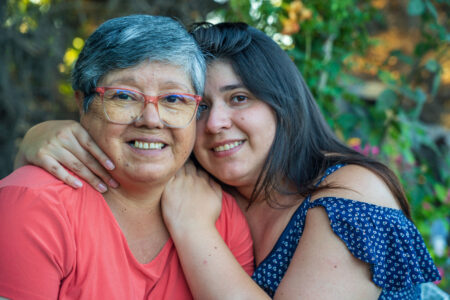
Share On Social!
Cancer death rates have dropped 34% over the past three decades, saving the lives of more than 4.5 million people.
And it’s all thanks to cancer research.
Research is the foundation of critical public health efforts, including prevention, screenings, and advancements in cancer treatment, according to the latest progress report on cancer from the American Association for Cancer Research (AACR).
Every year the AACR puts out its progress report to discuss the latest achievements in research while keeping a watchful eye on the future, including the need for ongoing scientific research to one day eradicate cancer.
Here are 7 key takeaways from the report and how it will impact the future of cancer research.
1. The Number of Survivors is Projected to Rise
Between new treatments, therapies, and fewer lung cancer deaths brought on by a decline in smoking rates, there are more cancer survivors over the last few decades.
From 2011 to 2023, the average annual cancer death rate decline was 1.54% per year, according to AACR’s report.
In men it was 1.87% per year and in women 1.33% per year.
What’s more, by Jan. 1, 2025, there were 18.6 million individuals who have a history of cancer living in the US.
This number is projected to increase to over 22 million by 2035.
2. There Are More Hurdles to Survivorship Than Ever Before
Despite the rising number of survivors in the US, there are still many challenges facing cancer survivorship.
For instance, not every cancer type has made the same progress over the last few decades.
Cancers such as pancreatic cancer and glioblastoma multiforme, which is a form of brain cancer, have a 13% and 6% 5-year survival rate.
It’s a stark difference when compared to breast and prostate cancers, which have 92% and 98% 5-year survival rates respectively.
What’s more, cancer outcomes continue to be determined by outside factors that align with the non-medical drivers of health, such as access to healthy food, transportation, air quality, and access to affordable healthcare.
These non-medical drivers can place a heavy burden on survivors or even increase someone’s risk for cancer.
Furthermore, cancer is not just an economic burden on patients and families, it also takes a large toll financially on research.
Currently, researchers are facing unprecedented cuts to federally funded research that could have disastrous impacts on research for years to come, including delays to life-saving treatments.
Without funding, there could be major delays in life-saving treatments, less research focused on certain groups and populations, and fewer resources to make discoveries that could potentially lead to a cure.
With cuts to federal employees, there are also fewer researchers working on projects that could have huge impacts on the future of cancer care.
3. There’s an Increase in Cancer Risk Factors
While cancer deaths have dropped dramatically over the last few decades, it hasn’t been the same for new cancer cases.

Much of that is due to the rise in risk factors associated with cancer, especially childhood obesity, which is on the rise in many US children.
Risk factors such as tobacco use, excess body weight, physical inactivity, excess exposure to ultraviolet radiation, alcohol consumption, environmental factors, and cancer-causing pathogenic infections are all modifiable risk factors and account for 40% of all cancers, according to the report.
“Between 1975 and 2020, approximately 5.94 million cancer deaths were averted due to public health interventions focused on tobacco control, national screening programs, and vaccination initiatives,” AACR’s report stated.
These modifiable risk factors will continue to play a role in cancer diagnoses and, if not addressed, can hinder the progress made against cancer for the next five decades, particularly when it comes to obesity.
Obesity is linked to liver, colon, pancreatic, esophageal, gallbladder, and other cancers.
Between 2021 and 2023, there was a 40.3% prevalence of adult obesity in the US.
Modifiable risk factors aren’t limited to the physical realm. In addition, psychosocial factors, such as stress, can also play a role in a cancer diagnosis.
When accompanied by behaviors, such as smoking, alcohol consumption, and poor diet, these psychosocial factors can put someone at higher risk for cancer.
Environmental factors, such as containments in the air, water, and food, can also cause harm and heighten risk for cancer.
To address this, more must be done to examine the relationship between these risk factors and how they impact certain areas or populations when it comes to cancer.
4. Cancer Screening and Prevention are Changing
One of the biggest reasons for the drop in cancer deaths is early cancer detection methods like mammograms for breast cancer and screenings for more treatable cancers such as prostate or colorectal cancer.
The advancements in screening technology have saved countless lives from cancer.
Cervical screenings have saved 100% of people who received them, 79% of colorectal cancer patients, 56% of prostate cancer patients, and 22% of breast cancer patients, according to AACR’s report.
Despite having access to these screening technologies, many cancers, including breast cancer, continues to be a top cause of death, especially among Latinos.
However, just because these advancements exist doesn’t mean everyone is taking advantage of them.
There continues to be challenges that prevent people from seeking screening, including lack of insurance, access to health care facilities, mistrust of the healthcare system, and the cost.
This leads to later diagnoses and delayed treatment, resulting in a higher probability for death and more expensive care.
To address this, “researchers have identified proven strategies that are helping more people get screened, such as incorporating patient navigation, using electronic health records to send reminders, making it easier to access testing, and building trust through approaches that are tailored to the needs of different communities,” according to AACR’s report.
5. Treatments and Therapies are Advancing with New Technologies

Thanks to advancements in technology, there are new cancer interventions emerging that could change the way we look and react to cancer care.
One of the biggest advancements is the use of artificial intelligence technology.
When applied to cancer care, AI can “analyze histopathology images, identify genomic alterations, discover new drug candidates, improve early detection, streamline drug development, and support clinical decision-making,” according to AACR’s report.
CRISPR gene editing tools are another technological advancement making waves in the cancer world.
CRISPR gene editing is a scientific process that allows for the precise change of an organism’s DNA. It allows for the deletion, insertion, or modification of genes.
This technology is being used to “uncover which mutations drive tumor development, identify vulnerabilities in cancer cells, and design personalized treatment approaches.”
The creation of liquid biopsy is being used as an alternative way to check for cancer.
The non-invasive method can be used to “enhance early detection, improve diagnosis, inform treatment selection, and monitor disease progression or recurrence.”
Other emerging therapies are being created to help with prevention such as vaccines that are being used to “either prevent cancer in high-risk individuals or treat existing disease by training the immune system to recognize and attack tumor-specific targets.”
6. New Innovative Treatments Are Helping Create More Survivors
There have been major innovations in the realm of cancer treatments.
Between July 1, 2024, and June 30, 2025, there have been 20 new cancer therapies approved for use by the FDA, according to the report.
These new therapies include a new molecularly targeted therapy to target lung and pancreatic cancer, a therapy for brain tumors, and a new T-cell receptor therapy for a rare sarcoma.
They also approved one new device for treating lung cancer while simultaneously expanding eight previously approved anticancer therapeutics for new cancer types.
7. Research Is Only as Great as its Resources
Funding at the federal level plays a pivotal role in achieving advancements in research.
These often come in the form of investments to agencies, such as the National Institutes of Health (NIH), the National Cancer Institute (NCI), the FDA, and the US Centers for Disease Control and Prevention.
Many employees of these agencies work tirelessly to support the “discovery of lifesaving therapies, strengthen the clinical trial infrastructure, train the scientific workforce, and expand access to cancer screening and care,” according to AACR’s report.
However, there have been proposed large reductions to these agencies’ funding, putting the future of cancer research in jeopardy.
Specifically, it would “stall scientific discovery, limit access to promising new therapies for patients and discourage the next generation of researchers at a critical time.”
These reductions were strongly opposed by American people.
In fact, a recent poll put 77% of Americans against the federal funding slashes to research.
To combat this, the Senate Appropriations Committee voted to pass the FY 2026 Labor, Health and Human Services, and Education Appropriations Subcommittee bill.
The bill provides $7.2 billion to the NIH and $7.374 billion for NCI.
Volunteer for a Clinical Trial for Your Familia!
Cancer and Alzheimer’s hurt many of our abuelos, moms, dads, and others we love.
Clinical trials help us fight for our familia.
Clinical trials are studies that help researchers learn more to help slow, manage, and treat Alzheimer’s and cancer for current and future family members. But without volunteers for clinical trials, the benefits may miss this group.
Visit our clinical trials page to find a clinical trial, read about hero volunteers, and more!
“Volunteers in clinical trials are not only helping themselves, but they’re also building a future with better treatments that can help their families in the future,” said Dr. Amelie Ramirez, director of Salud America! and the Institute for Health Promotion Research at UT Health San Antonio.
Those looking for opportunities based in San Antonio can search the Mays Cancer Center at UT Health San Antonio’s Find a Clinical Trial database to learn more about available clinical trials and eligibility requirements.
On a national level, visit clinicaltrials.gov to find a clinical trial near you.
Explore More:
Latino CancerBy The Numbers
1
out of 10
Pedestrians survive when hit by a car at 40 MPH



